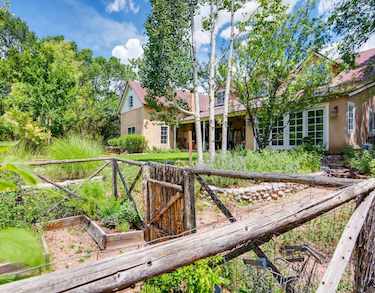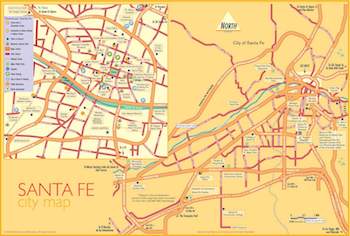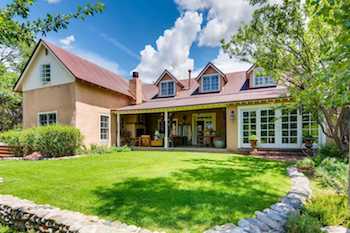When you know, you know. Two of your kids may share a tiny room. Sports gear may block the entry to your house. Toys may live on the floor because there’s nowhere else to put them. And meal prep may take place while counter surfaces are crowded with backpacks, mail, and the latest school projects. Your family needs a larger home in Santa Fe.
If you’ve sworn that your bare foot has come into contact with a LEGO block for the last time (yeah, it hurts!), it may be time to find a larger home for your growing family. We often hear from clients who want to trade up to a larger house, so we can help. Your Barker real estate broker is a valuable resource who can help you reach your goal. Be sure to tap into their expertise and advice. We have some blog posts on this topic, too.
Although you and your family are the best judges of what you need in a larger home, the process of finding one can be daunting. Here are a few key ways to go about it.
 Map Out Your Location Needs
Map Out Your Location Needs
Growing families manage hectic schedules that can be packed with after-school activities and weekend sports events. That makes the location of your home a key factor. Use Google Maps to plot the locales of schools, work, your children’s activities, gyms, and anywhere else a family member needs to reach on a regular basis. You’ll also want to include places like the pediatrician, dentist, daycare, and library. The results will show the optimal area where your larger home should be located.
Based on what’s currently on the market, you may need to widen that optimal buying area. And that will likely create a longer drive to get somewhere your family needs to be. Many families buy a larger home in a location that’s closer to schools than to work. A parent will often opt for a longer commute so that kids can be closer to schools.
You can shop for a home in a number of different Santa Fe areas using our Greater Santa Fe neighborhood profiles. Just choose an area and start browsing.
 Prioritize Your Home-Buying Criteria
Prioritize Your Home-Buying Criteria
Your search for a larger home will most likely begin online. Real estate search tools, including our property search tool, contain search parameters that let you select or exclude certain home features. When you work with one of our brokers, they’ll want to know what you’re looking for in terms of house size, number of bedrooms, and so on.
The time to determine your home-buying criteria is before you start looking. Yes, you need a bigger home. How much bigger? To answer that question, try using this process:
- List the number of rooms you need, excluding bedrooms and bathrooms.
- List the number of bedrooms you need. If you want the grandparents or other relatives to stay with you, you’ll need to add a guest bedroom to your count.
- List the number of bathrooms you need.
- Determine the desired square footage for each room. This sounds hard, but you can use your current home to help you estimate. If you want to skip this step, at least think about relative sizes. A study will be smaller than a family room, for example. If kids are sharing a room in your current house, your goal may be for them to have their own bedrooms in a larger house.
- Total up estimated square footage per room. Add in sizes for a garage and storage. The result will be an estimate of the overall square footage you need.
You’ll also want to determine whether your larger home should have features like a large lot, a home office, or a first-floor master suite. Use our trading-up homebuying checklist to help you.
 Consider Room Layout
Consider Room Layout
As you list your home-buying criteria, think about the ideal room layout for your larger home. Some families want a master bedroom located close to kids’ bedrooms. Other families look for more separation. You may want an open layout for kitchen, family, and dining area—especially popular with families with young children so parents can keep them in sight. A parent who works from home may need an office as far away as possible from the rest of the household.
Think About Storage
A growing family will accumulate more stuff. Even if you don’t already own bikes and other recreational gear, you will in the future. Make sure you include storage space as a must-have on your home-buying checklist. Consider what you own that you’ll usually store, such as gardening tools, mower, ladders, and all the items that come with home and lot maintenance. Be sure to include vehicles—the ones you own now and any you plan to buy in the future.
Determine Your Budget
Figure out how much you can spend to buy a larger home. Many lenders use the 28/36 rule to determine how much you can afford to borrow.
This guideline says that total housing expenses shouldn’t exceed 28 percent of your gross monthly income. Housing expenses generally mean what’s known as PITI: the monthly principal on a mortgage, interest, property taxes, and insurance payments. Homeowner association fees and condo fees are also included in PITI.
The second part of the ratio says that a household should spend no more than 36 percent of its gross monthly income on all debt, including housing debt. You can reach this number by dividing all monthly debt payments by your gross monthly income. Be sure to include all debt: housing-related payments, car loans, student loans, credit card debt, and so on. You can find 28/26 rule calculators online.
 Consider Your Timeline
Consider Your Timeline
You may need sell your current home before you buy a larger one. You may want to move over the summer if new schools are on the horizon. Set a target date for an accepted offer and work backward from there, keeping your personal schedules in mind. Your Barker real estate broker can give you a reading on how long it takes to buy a home based on the current market.
Fill in Your Real Estate Broker
Finding the ideal larger home involves a lot of homework on your part. Bring all of it—your timeline, budget, desired home features, and your location preference—to your Barker broker. Keeping your broker fully informed of your needs and wants will help them put their expertise to work for you. As you search, you may change your criteria and preferences. Keep your broker in the loop. Our brokers live and breathe Santa Fe real estate. They know about the latest listings and the prevailing trends. Their goal is your goal, and when your goal is getting into a larger house, they can help.

 Map Out Your Location Needs
Map Out Your Location Needs Prioritize Your Home-Buying Criteria
Prioritize Your Home-Buying Criteria Consider Room Layout
Consider Room Layout Consider Your Timeline
Consider Your Timeline